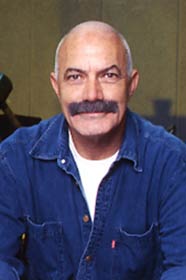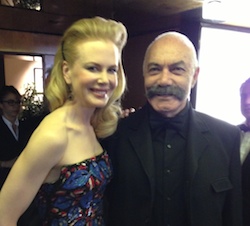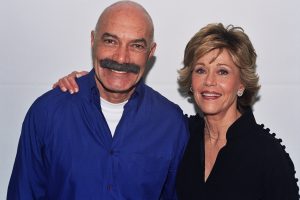Some critics consider “The Nun’s Story,” which doesn’t fit easy categorization in terms of genre, to be Fred Zinnemann’s masterpiece, a feature that’s least compromised by commercial considerations in subject, tone, and running time.
“The Nuns Story” is a memorable revelation of the seldom-seen world behind convent walls. Audrey Hepburn portrays Sister Luke, a nun whose life journey leads her to a much-desired position as a surgical nurse in a Belgian Congo missionary hospital. After she returns to her native Belgium, World War II breaks out and she finds her commitment seriously tested–torn between the pull of the Resistance and the church’s neutrality.
Based on Kathryn Hulmes best-selling novel, Robert Anderson’s script depicts the spiritual tug-of-war between adherence to the vows of chastity, obedience, silence, and poverty and a rebellion against those very vows
Hepburn stars as Sister Luke in this tale of a young woman’s decision to become a nursing nun in the Belgian Congo. Her arduous soul-searching results in her decision to leave the Holy Order, realizing that she is spiritually unsuited to the discipline imposed by it.
The first part, done in a semi-documentary style, depicts how a young woman becomes a nun, specifically the various stages through which she has to pass before taking her final vows. Through Mother Superior (Edith Evans), the movie articulates the philosophy and spiritual stress in the formation of a nun, and the effects of the rigorous education on her.
Despite a deeply personal and private tug-of-war, between her wish to respect the ingrained discipline and her spirit to rebel. Initially, she is threatened by the fecund life in the Congo, and a couple of violent incidents shock her mind. Then there are pressures of her daily routines and constant, incisive criticism of her practices from an attractive and agnostic medical man (Peter Finch) that disturb and upset her mind.
She suffers a slight case of tuberculosis and is sent back to Belgium to recover. Later one, she is disappointingly denied the right to avenge her slain father by serving as a nurse with the Belgian underground in WWII.
Instead, she is assigned as a surgical nurse at a local hospital, where her struggle with obedience becomes impossible for her to sustain, as she is forced into compromises in coping with the reality of the Nazi occupation. In the end, unable to endure the discipline of her order, she is granted her wish to be released.
The final scene, in which she changes into ordinary garb and walks out of the gate is remarkably effective. It has no score, ending in silence, an uncommon stylistic choice for the era, but consistent with the sound strategy of Zinnemann and composer Franz Waxman.
The movie represents a tender elegy to the fading traditions of European convent life and serves as a great celebration of the primacy of conscience, a consistent theme in all of Zinnemann’s oeuvre, including his 1966 Oscar winning film, A Man for All Seasons.
As director, Zinnemann succeeds in combining a film of ideas with strong visual imagery that benefits from the stunning contrast of color. Contemplative in tempo and mood, this offbeat drama describes a parable of spiritual deflation that ends in a strange sort of defeat. On one level, she loses her soul, and on another, she regains it.
In one of her strongest, most fluent, and luminous appearances, Hepburn is perfect for the part, registering emotions with her expressive eyes and eloquent gestures. In her interpretation, the Sister’s maturation is all internal with no help from make-up, costume, or hairdo.
The critic Stanley Kauffmann wrote: “Audrey Hepburn’s performance as Sister Luke is better than her sheer ability could make it, because her person is so right for the part. After she has done all she can do with knowledge, her beauty speaks for her. Hepburn’s beauty serves as an intensifying glass for the inner travail she is trying to convey.”
As for the men, Peter Finch gives a strong, taut performance as the handsome tropical physician whose views upset Sister Luke and lead her to reassess her own way of life, and Dean Jagger is appropriately tender and affectionate as the nun’s father.
The stellar supporting cast includes Edith Evans, Patricia Collinge, Peggy Ashcroft, Mildred Dunnock, and Beatrice Straight, all playing Sisters. Colleen Dewhurst, who later became a major theater actress, makes her feature debut in s small but attention-calling part.
Oscar Alert
Directed by four-time Oscar-winner Fred Zinnemann, The Nuns Story received eight Oscar nominations, including Best Picture.
Oscar Nominations
Picture, produced by Henry Blanke
Director: Fred Zinnemann
Screenplay (Adapted): Robert Anderson
Actress: Audrey Hepburn
Color Cinematography: Franz Planer
Sound: George R. Groves; sound director, Warner
Scoring: Franz Waxman
Editing: Walter Thompson
Cast
Audrey Hepburn as Sister Luke (Gabrielle “Gaby” Van Der Mal)
Peter Finch as Dr. Fortunati
Edith Evans as Rev. Mother Emmanuel
Peggy Ashcroft as Mother Mathilde
Dean Jagger as Dr. Hubert Van Der Mal
Mildred Dunnock as Sister Margharita
Beatrice Straight as Mother Christophe
Patricia Collinge as Sister William
Rosalie Crutchley as Sister Eleanor
Ruth White as Mother Marcella
Barbara O’Neil as Mother Didyma
Margaret Phillips as Sister Pauline
Patricia Bosworth as Simone
Colleen Dewhurst as “Archangel Gabriel”
Stephen Murray as Chaplain (Father Andre)
Lionel Jeffries as Dr. Goovaerts










